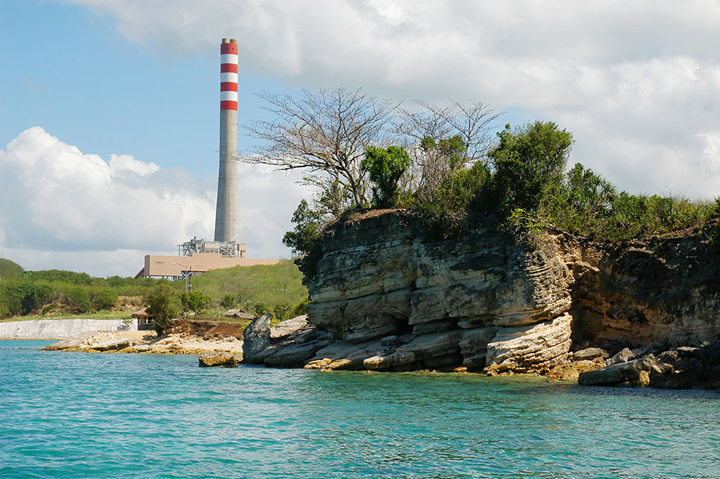
Manila-based Asian Development Bank (ADB) partnered with the Philippines and Indonesia to set up an Energy Transition Mechanism (ETM) that aims to speed up the retirement of coal-fired power plants in these pilot countries and hasten the shift to clean energy.
The ETM Southeast Asia Partnership, which is the first of its kind in Asia and the Pacific, was launched on Wednesday at the 26th United Nations Climate Change Conference of the Parties (COP26) in Glasgow, Scotland.
Envisioned to be the world’s largest carbon reduction program, the ETM will comprise two-multi-billion-dollar funds: one devoted to early retirement or repurposing of coal-fired power plants on an accelerated timeline, and the other focused on new clean energy investments in generation, storage, and grid upgrades.
It is also envisioned that multilateral banks, private institutional investors, philanthropic contributions, and long-term investors will provide capital for ETM.
During the two-to-three-year pilot phase, the ETM will raise the financial resources required to accelerate the retirement of five to seven coal plants in Indonesia and the Philippines, while facilitating investment in alternative clean energy options within these countries.
According to the ADB, energy demand in Asia is set to double by 2030 and Southeast Asia is one of the regions continuing to build new coal-fired capacity.
More than half of the total or 57 percent of the Philippines’ power generation and some 67 percent of Indonesia’s electricity comes from coal.
In the design phase of ETM, ADB and its partners will also form an advisory group to prioritize a just transition to clean energy. Technical assistance will also be provided for reskilling and the livelihood development of affected workers and communities.
At full scale-up of ETM, it is also envisioned that 50 percent of the coal fleet in Indonesia, Philippines and possibly Vietnam would be retired over the next 10 to 15 years.
Retiring 50 percent of the coal fleet which is approximately 30 gigawatts, could cut 200 million tons of carbon emissions per year or equivalent to taking 61 million cars off the road.
In his video message during the launch, Vice Minister for International Affairs at the Ministry of Finance of Japan Masato Kanda announced Japan’s Ministry of Finance was committing a grant of $25 million to ETM, the first seed financing for the mechanism.
ADB President Masatsugu Asakawa said ETM can usher in a transformation in the battle against climate change in Asia and the Pacific.
“Indonesia and the Philippines have the potential to be pioneers in the process of removing coal from our region’s energy mix, making a substantial contribution to the reduction of global greenhouse gas emissions, and shifting their economies to a low-carbon growth path,” Asakawa said.
Finance Secretary and Climate Change Commission (CCC) Chairman-Designate Carlos G. Dominguez III said a clean energy transition in the Philippines will create jobs, promote national growth, and lower global emissions.
Dominguez also said the Philippines has a unique opportunity in Mindanao to pilot the ETM project as the government is in the process of rehabilitating the Agus-Pulangi hydropower plant to improve its generating capacity.
As the Agus-Pulangi power plant complex composed of seven hydropower plants increases its generating capacity, the government can proceed with its plan to gradually acquire coal-fired power plants in Mindanao and repurpose them through the ETM facility.
“Mindanao will showcase an Earth-friendly future that can be replicated in other areas in the Philippines–and even countries around the world,” he said. “Together with the Asian Development Bank, the Philippines is pioneering an innovative model that will set a global standard in transitioning to a cleaner energy future.”
As its Nationally Determined Contribution (NDC) to the Paris Agreement, the Philippines has committed to a projected GHG emissions reduction and avoidance of 75 percent, referenced against a projected business-as-usual cumulative economy-wide emission of 3,340.3 million tons of CO2 equivalent for the 2020–2030 period.
Last year, the Philippines announced a moratorium on new coal-fired power plants.
The Philippines accounts for only 0.3 percent of global carbon emissions, but as an archipelago sitting on the typhoon belt and the Pacific Ring of Fire, it is among the most vulnerable to the adverse effects of climate change.
For his part, Indonesia Finance Minister Sri Mulyani Indrawati said “ETM is an ambitious plan that will upgrade Indonesia’s energy infrastructure and accelerate the clean energy transition toward net zero emissions in a just and affordable manner.”
Indonesia has committed to reducing emissions by 29 percent by 2030 and achieving net zero emissions by 2060.
A pre-feasibility has already been completed and a full-feasibility study is underway to finalize the financial structure of ETM, identify candidate coal plants for inclusion in the pilot program, and design just transition activities.
Image courtesy of Antonio Oquias | Dreamstime.com

